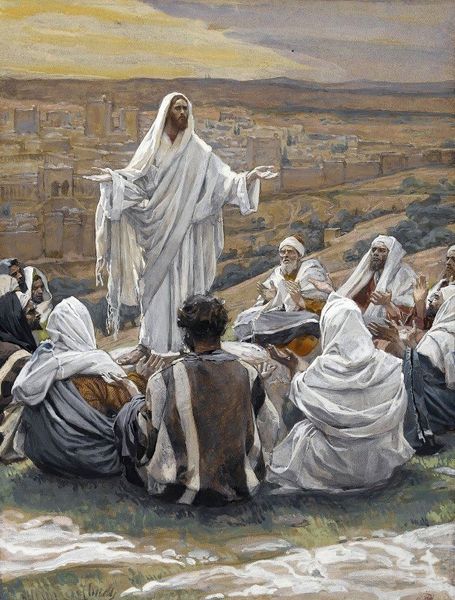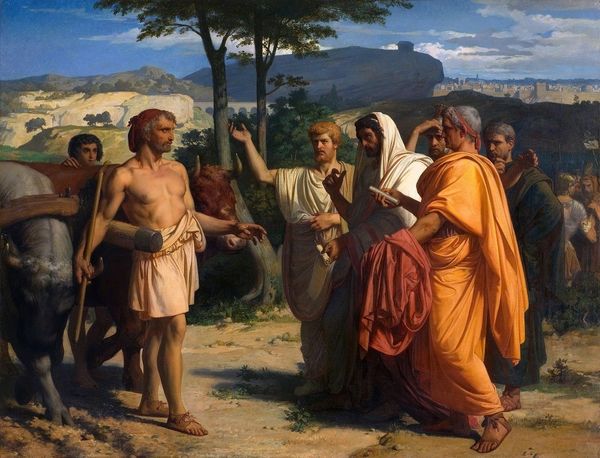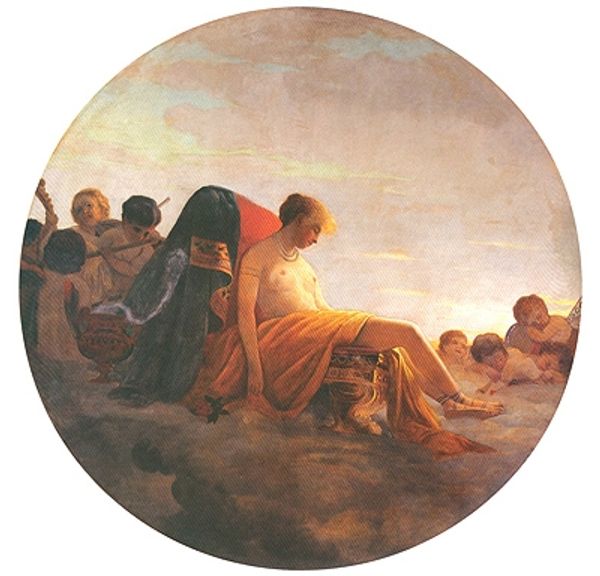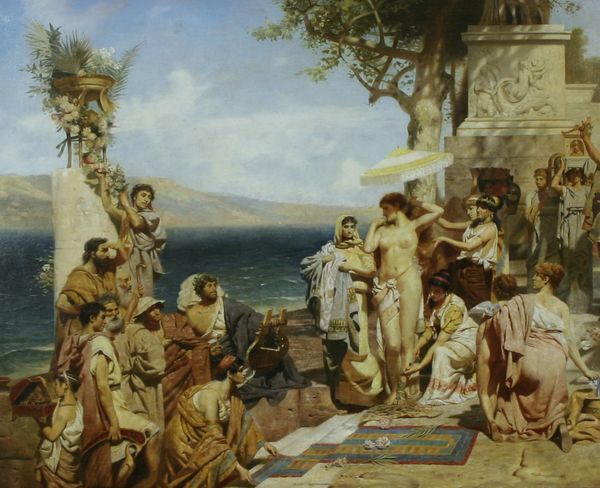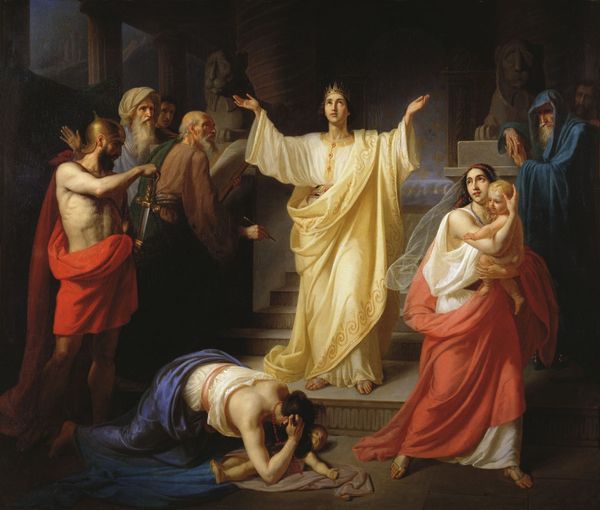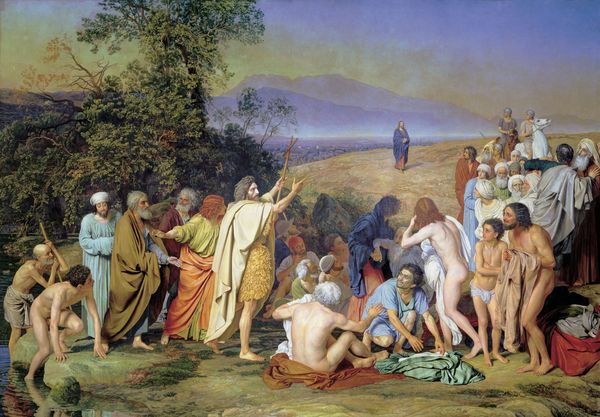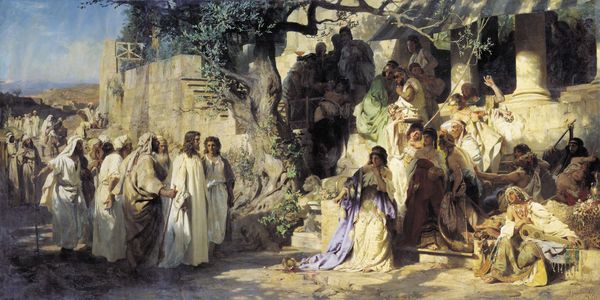
Dimensions: 99.7 x 161 cm
Copyright: Public domain
Curator: Bronnikov's 1869 canvas, “Pythagoreans celebrate sunrise," seems to glow, doesn’t it? A serene landscape frames a cluster of figures draped in white, posed in attitudes of worship. Editor: Indeed. The overwhelming whiteness is striking; it evokes ideas about purity, and of course, privilege. It feels very… staged. Were these Pythagorean philosophers truly a homogenous group? Or is this an idealised rendering through a specific 19th-century lens? Curator: The painting’s genesis lies in the late 19th century and the rise of positivism. There's a desire to depict historical narratives, yes, but it’s a selective rendering that also carries contemporary political implications. Bronnikov intended this as an allegory of spiritual awakening. Editor: Ah, yes, but what are the power dynamics here? Who gets to define "spiritual awakening?" Consider the very European features Bronnikov imbues to his subjects. It’s a construction. And the positioning of the central figure with outstretched arms—echoing Christ, almost—is quite telling. The image promotes the dominance of Westernized ideas. Curator: However, the appeal also lies in its accessibility. These paintings offered moral guidance that spoke to the educated middle class. You see the resurgence of interest in classical virtues against the backdrop of rapid industrial change. It's an imagined Golden Age. Editor: A “Golden Age” that excludes so much. If we consider the political milieu of Russia at that time, we must explore the issues that arise from portraying the “past” with such conviction—particularly who the artist includes in, or rather excludes from, this seemingly innocent dawn. What’s erased is as important as what’s rendered here. Curator: Certainly. But what endures for me is Bronnikov's skilled handling of light, capturing the tranquil anticipation of the sunrise, offering hope and reflection... Perhaps inviting the viewer to reconsider what constitutes virtue or spirituality today. Editor: Perhaps. But I urge us to confront whose narratives get legitimized through artworks like this. And in this instance, recognizing the absence of diversity is absolutely crucial for a modern viewing. Let’s not repeat history.
Comments
No comments
Be the first to comment and join the conversation on the ultimate creative platform.

